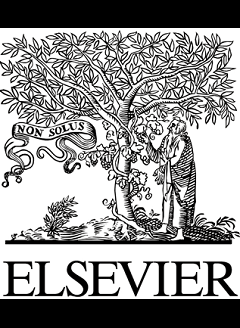دانلود رایگان مقاله مدیریت سرمایه در گردش – سال 2020


مشخصات مقاله:
عنوان فارسی مقاله:
مدیریت سرمایه در گردش: تأثیرات مالی و ارزش گذاری
عنوان انگلیسی مقاله:
Working capital management: Financial and valuation impacts
کلمات کلیدی مقاله:
حسابداری مالی، گزارش مالی، نسبتهای مالی، سرمایه در گردش، مدیریت خزانه داری، امور مالی شرکت
کلمات کلیدی انگلیسی:
Financial accounting – Financial reporting – Financial ratios – Working capital – Treasury management – Corporate finance
مناسب برای رشته های دانشگاهی زیر:
مدیریت
مناسب برای گرایش های دانشگاهی زیر:
مدیریت مالی
وضعیت مقاله انگلیسی و ترجمه:
مقاله انگلیسی را میتوانید به صورت رایگان با فرمت PDF با کلیک بر روی دکمه آبی، دانلود نمایید. برای ثبت سفارش ترجمه نیز روی دکلمه قرمز رنگ کلیک نمایید. سفارش ترجمه نیازمند زمان بوده و ترجمه این مقاله آماده نمیباشد و پس از اتمام ترجمه، فایل ورد تایپ شده قابل دانلود خواهد بود.
فهرست مطالب:
Abstract
Keywords
1. Introduction
2. Background and methodology
2.1. Background
2.2. Methodology & hypotheses
3. Results
4. Conclusions and future research recommendations
References
قسمتی از مقاله انگلیسی:
1. Introduction
Working capital can be a competitive advantage for firms.1 In recent years major corporations have discovered that there are important cash flow streams available to them if they aggressively manage their working capital accounts (accounts receivable, inventory, accounts payable, and advance payments) (Reason, 2002). Moreover, a recent study by PWC found that improvements in working capital management can help boost performance metrics such as Return on Common Equity.2 According to Cohen and Cyert (1975, p. 8), “all owners of productive resources will be earning the maximum return consistent with consumer demands for final products and consistent with the resource owners’ preferences.” The theory of the firm has not changed and resources should receive their highest uses and earn the highest returns for the stakeholders. The use of working capital is necessary to provide for the timing differences in the cash flow streams devoted to inventory, accounts payable, and accounts receivable and, for some durable goods manufacturers, advance payments or progress collections. Under the Jensen and Meckling (1976) version of the firm’s objective function, the components of working capital (cash, accounts receivable, inventory, and accounts payable) are part of the objective of maximizing shareholder value by the management of the firm. The financial metrics that are computed are critical to business operations and involve contracts with suppliers (accounts payable and DPO); raw material inventory, work-in-process inventory and finished goods inventory (DSI) (workers and contractors contracts as part of COGS); and the end consumer (accounts receivable and DSO along with the product warranty). Under the theory advanced by Jensen and Meckling (1976), the working capital measures cited above all deal with the same process and should be highly correlated with one another, as well as being correlated with the firm’s operating cycle measure (Cash Conversion Cycle, CCC). Our empirical results confirm this high degree of correlation and support the theory advanced by Jensen and Meckling (1976) and their version of the firm’s objective function.



